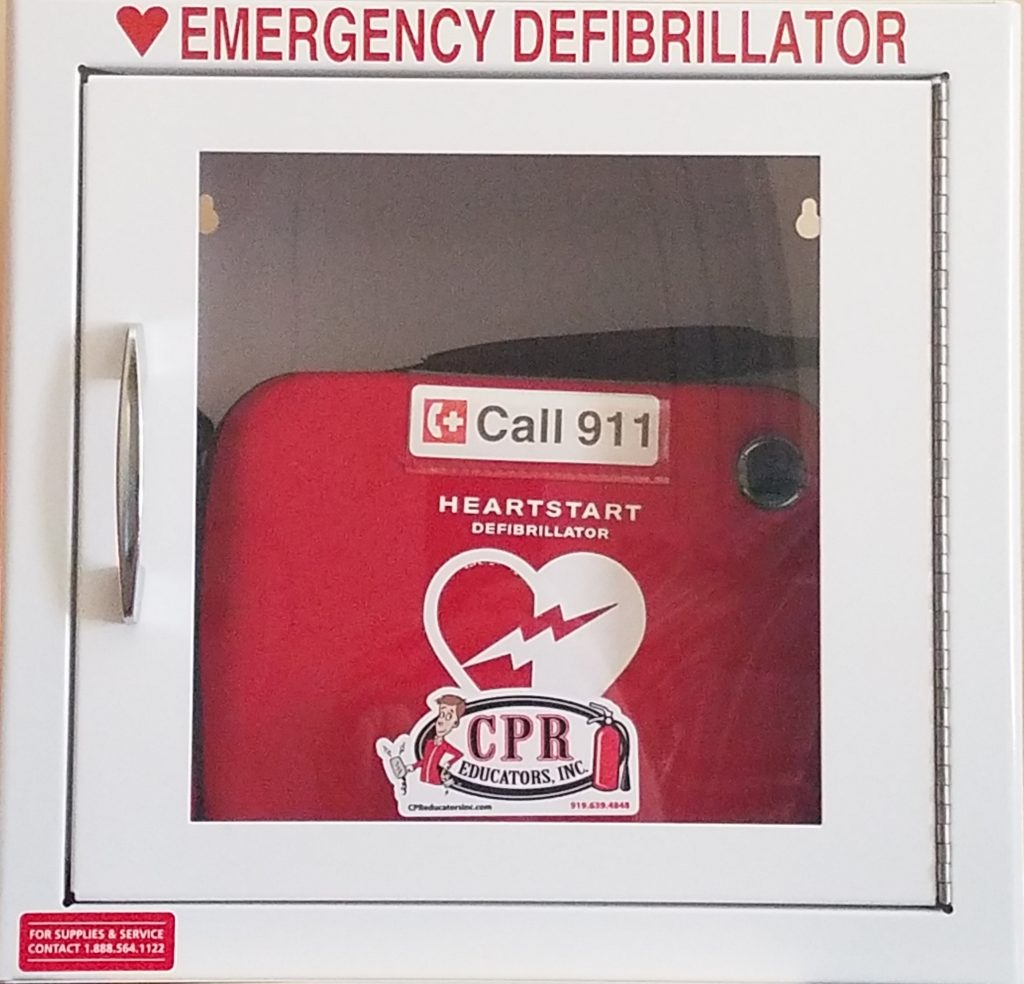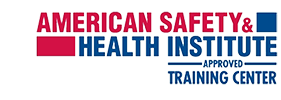Now you have an AED.
But where should you put it?

CONGRATULATIONS! Your company has made an excellent investment in the health and safety of you and your co-workers by the purchase of an AED (Automatic External Defibrillator). They have taken a huge step forward in reducing the chances that someone near you will not survive from sudden cardiac arrest (SCA).
You have already taken a CPR training course and made sure everyone is familiar with and can operate the AED with ease, because time really is of the essence when SCA occurs.
So I have a question?: Where is the best place to keep your AED so that it can be retrieved as quickly as possible?
According to the American Heart Association‘s recommendation, an AED should be retrieved, activated and the shock administered to the victim within three minutes of the victim’s collapse. Survival rates will decrease by 7-10% for each minute that the AED is delayed. That is why it is recommended having at least one AED per floor in offices, schools or any multilevel building.
Owners of AED’s need to figure out the most probable areas where an individual may suffer SCA, as well as place the AED in a location that is easily visible and easily accessible. This often turns out to be near a reception area, lobby, lunch or break-room, fitness room or centrally located corridor. It is important to keep in mind foot traffic patterns, places where individuals tend to congregate (conference rooms, copy machines, printer locations or around Chris’ office a little humor to see if you’re paying attention), and facilities where at-risk activity might occur (such as gyms, pools or fitness centers). All these can be locations with a heightened probability of SCA occurrences, which makes the proximity of an AED even more critical.
Keep the following points in mind with placing your AED:
- Make sure the AED is accessible to everyone and highly visible. Place signs on the wall that are elevated to ensure clear sight-lines.
- According to the Americans with Disability Act (ADA) guidelines, the height to reach the handle of an AED in a public place should be no more than 48 inches high. The maximum side reach of an unobstructed approach to an AED is 54 inches.
- Never place an AED in a locked and/or out of sight area. Small lockable cabinets designed for AEDs have alarms to alert bystanders and guard against theft. Try to find a middle ground between a well-secured AED and an easily accessible AED. The unit should not be kept behind a locked area or where EVERYONE (employees, students, visitors, guests) have access to it.
- Place the AED near a phone for use when 911 is called. There are some AED cabinets with the ability to contact 911 when opened.
- For rapid response, trained rescuers should be evenly spread out through the building (to train more of your employees, click here for information on our Workplace Training programs). Rescuers should not run with an AED in hand – if it becomes damaged in a fall or the rescuer becomes injured, the unit may not work properly and the rescuer may not be able to help anyone.
- For schools or churches, there are often parts of the building locked after hours or during outdoor activity. Make sure a clear path to the AED is available – or better yet, have an extra one to take outside for games, assemblies or missions.
- If your company operates in remote areas, especially where EMS may be significantly delayed or not available (marine vessels, offshore stations, construction areas) or hazardous locations (power lines/pipelines), each of those locations should have an AED.
Additional items should be placed with an AED to help the rescuers to perform CPR and to make sure the AED performs optimally. (ALL LEASED AED’s AND ALL PACKAGES PURCHASED THROUGH CPR EDUCATORS HAVE EMERGENCY READY KITS ATTACHED TO THE AED. These may include:
- a CPR face mask for delivering rescue breaths (in the event this is needed)
- gloves for personal protection
- a razor if the victim’s chest hair may interfere with the AED pad adhesion
- blunt scissors or trauma shears for cutting clothing away for the chest
- absorbent towels in case the victim’s chest is wet or very sweaty
- a biohazard bag for disposing of potentially infectious materials
CPR Educators offers site assessments of your office, church or school for consulting on the best placement for an AED.
For additional information on AED Programs contact CPR Educators at (919) 639-4848 or by filling out our contact form.
The knowledgeable and friendly staff are always eager to assist you in every step of the AED implementation process.



